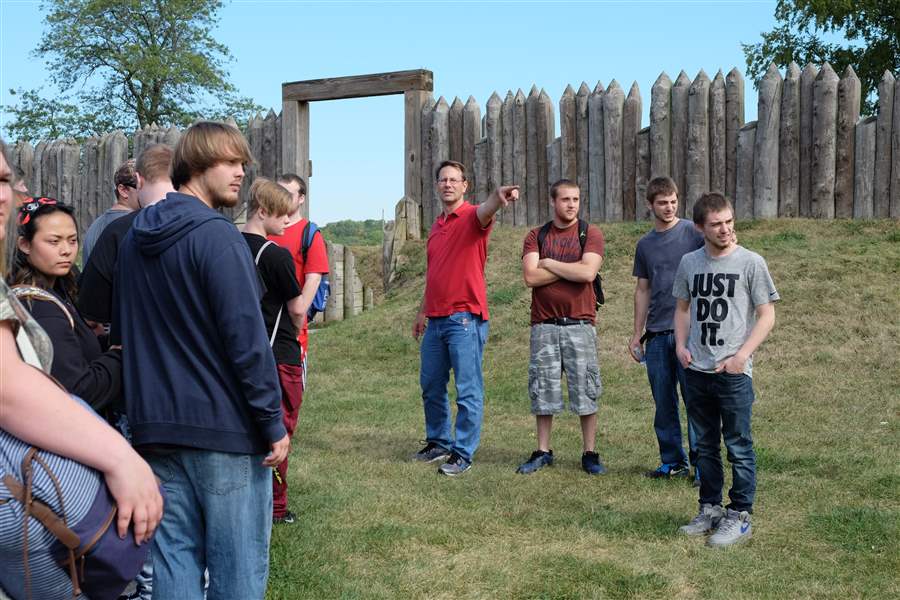
Teacher, students discover lost second Fort Meigs location
10/5/2017
Students from Niedermeier Center for Education in Newport, Michigan at Ft.Meigs in Perrysburg, Ohio on October 5.
The Blade/Jetta Fraser
Buy This Image
The Fort Meigs visitors attend now, 10 acres of bumpy, hilly land surrounded by wooden stakes and block houses, only existed for about eight months during the War of 1812.
American troops there twice repelled encroachments from enemy forces, but then tore down the battlements when soldiers deployed elsewhere. A smaller, one-acre fort replaced it. But eventually that fort was torn down, too, and when the modern Fort Meigs replica was built more than a century later, the smaller fort’s location was lost to history.
On Thursday, Adam Sakel and about 30 students from the Niedermeier Center for Education in Newport, Mich., set out to rediscover that missing piece of the past, staking out the probable location of the second fort within the confines of the larger fort.
“We’re looking to start a conversation with students on how do you want to be remembered, how do you want events remembered, should they always be remembered in the same way, does the story change, and that’s why we’re here looking at this,” Mr. Sakel said.
Rather than go through the history of the large and small forts that guarded the Maumee River, historical societies in an effort to simplify the location’s allowed the small fort to be forgotten, said Mr. Sakel, who worked at Fort Meigs for 15 years before becoming a teacher.
“We knew roughly where it was, but at no point did we have time to make the concerted effort to get maps out,” he said. “It was just playing around with stuff and I thought this might be an interesting project for my students.”
In addition to staking out the second Fort Meigs, students also marked the ditches that would have surrounded the mounds of dirt that dot the fields within the large fort. These earthworks were designed to shield soldiers from incoming British cannon fire, but the depths of the ditches have been forgotten.
“We’ve never really asked that question,” Dan Woodward, the program manager at Fort Meigs, said. ”The results of this program, Adam will share with us, so we will have a better idea of the size of the ditches.”
Prior to arriving at the fort, students used geometry and the size of an average solider to figure out how big the ditches would need to be, based on the size of the remaining dirt mounds.
“Most of the dirt piled there was put there by the troops that were stationed here,” Mr. Woodward said. “We have documented evidence that they dug ditches on each side of the pile of the dirt, and they’re calculating how big those ditches would have been.”
“We’re always looking for cross-curricular stuff,” Mr. Sakel said. “It’s tougher to cross from the humanities to the sciences. This offered the chance to play with that, and we haven’t done a lot of that in the past.”
Contact Zack Lemon at zlemon@theblade.com, 419-724-6282 or on Twitter @zack_lemon.